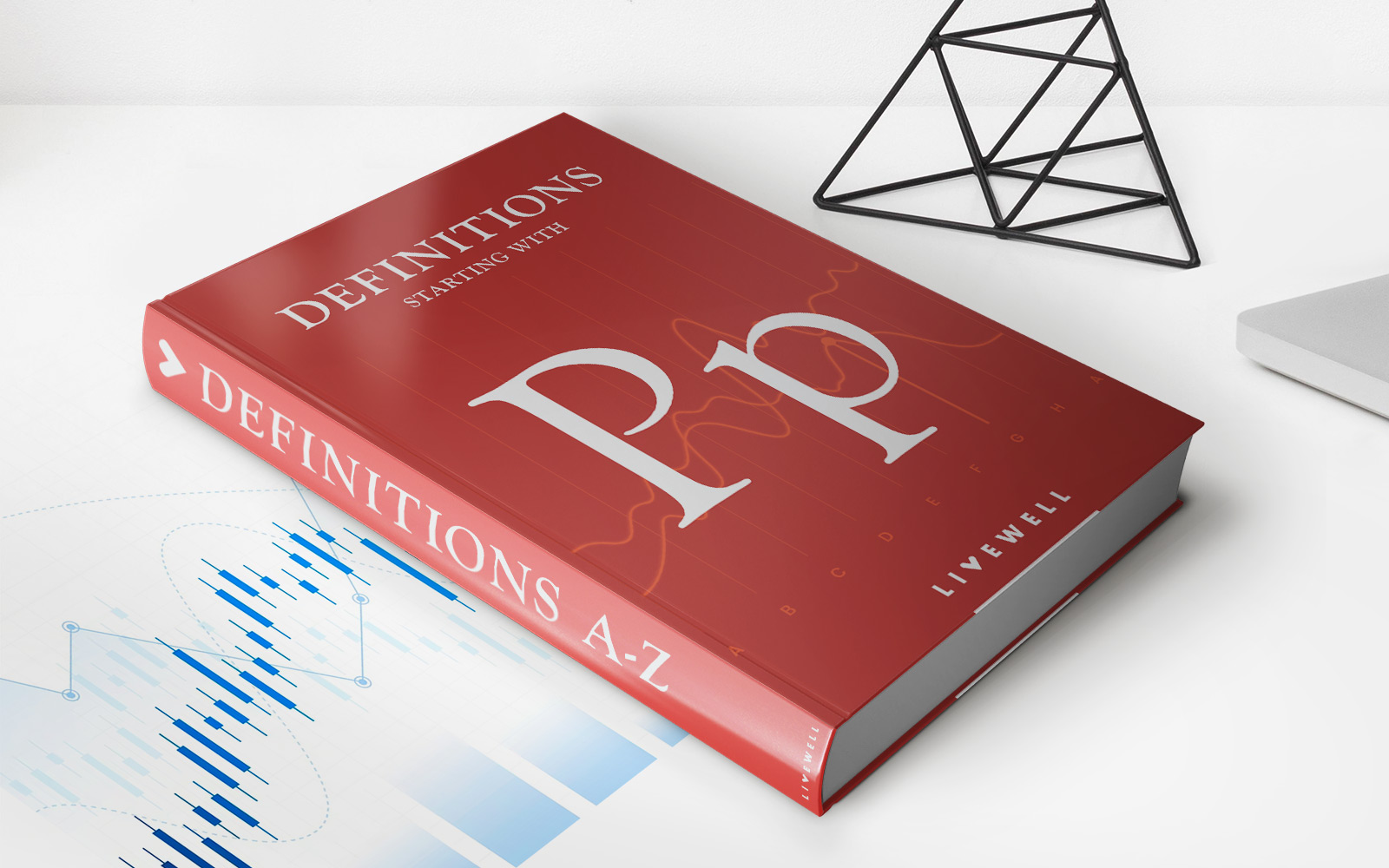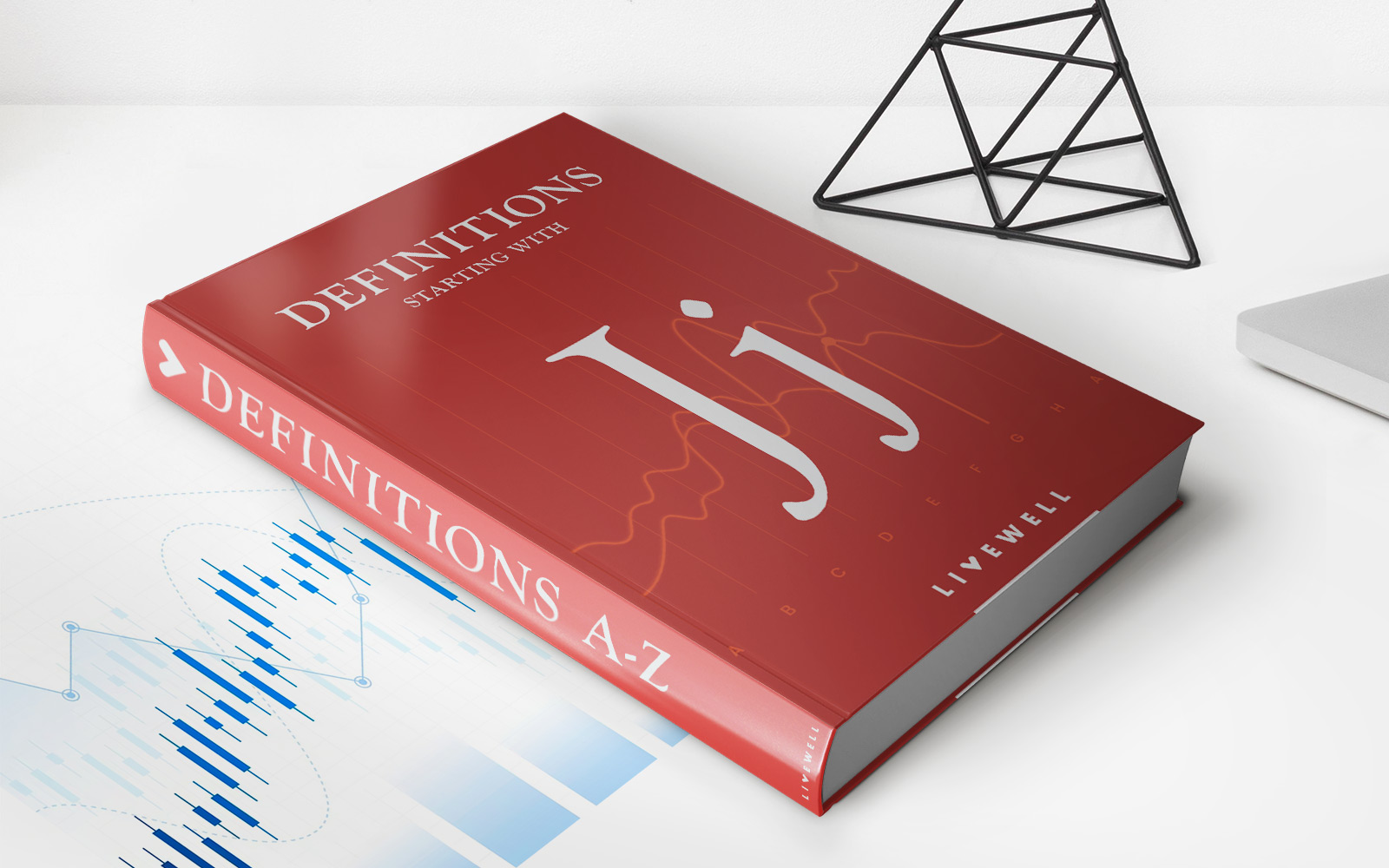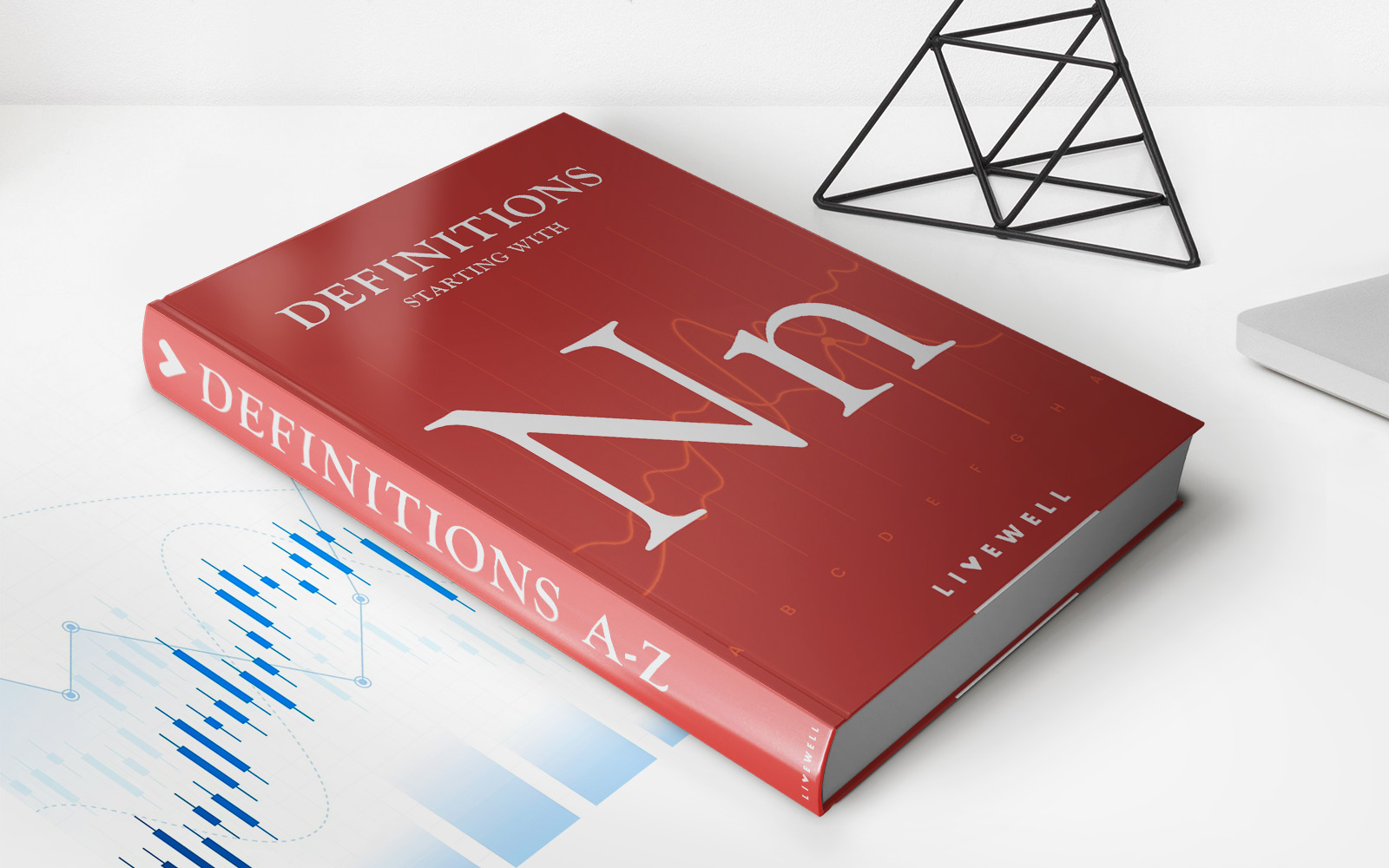

Finance
What Is Reduced Paid-Up Insurance?
Published: November 8, 2023
Learn about reduced paid-up insurance and how it can help you secure your financial future. Explore the benefits and considerations of this type of insurance.
(Many of the links in this article redirect to a specific reviewed product. Your purchase of these products through affiliate links helps to generate commission for LiveWell, at no extra cost. Learn more)
Table of Contents
Introduction
Insurance is an essential financial tool that provides protection and peace of mind in the face of uncertainties. It offers a safety net, ensuring that in the event of an unfortunate incident, individuals and their loved ones are financially secure. There are various types of insurance policies available, each designed to cater to different needs and circumstances. One such policy is reduced paid-up insurance.
Reduced paid-up insurance is a term that may not be familiar to everyone. It refers to a specific option available within life insurance policies, giving policyholders the choice to stop paying premiums while still maintaining a reduced amount of coverage. Essentially, it allows policyholders to convert their original policy into a new one with a smaller face value but with no further premium payments required. While this may seem like an attractive option for some, it’s important to understand how reduced paid-up insurance works and its pros and cons before making a decision.
In this article, we will delve into the concept of reduced paid-up insurance, explain how it works, discuss its benefits and drawbacks, compare it with other insurance options, and provide examples to highlight its application in real-life scenarios.
So, whether you’re considering purchasing a life insurance policy or have an existing one and want to explore your options, read on to gain a deeper understanding of reduced paid-up insurance and how it can impact your financial planning.
Definition of Reduced Paid-Up Insurance
Reduced paid-up insurance is a provision offered within certain types of life insurance policies that allows policyholders to stop paying premiums while still maintaining a reduced coverage amount. It essentially converts the original policy into a new one with a smaller face value, but without any further premium payments required.
Typically, reduced paid-up insurance is available within whole life insurance policies. Whole life insurance provides coverage for the entire lifetime of the insured, as long as the premiums are paid. However, there may come a time when policyholders find it difficult to continue paying the premiums due to financial constraints or changing priorities.
With reduced paid-up insurance, policyholders have the option to convert their whole life insurance policy into a new policy that requires no further premium payments. The coverage amount is reduced, as the premiums paid until that point have built up a cash value within the policy. This cash value is used to fund the new reduced paid-up policy.
The amount of coverage in the reduced paid-up policy depends on the accumulated cash value and the policy’s terms and conditions. Generally, the reduced coverage is based on a percentage of the original policy’s face value. Policyholders may have the flexibility to choose the specific coverage amount within that range, depending on the insurance provider’s options.
It’s important to note that reduced paid-up insurance is different from surrendering an insurance policy. Surrendering a policy means opting to terminate it completely and receiving the cash surrender value, if any. On the other hand, with reduced paid-up insurance, the policy remains in force, albeit with reduced coverage and no further premium obligations.
By exercising the reduced paid-up insurance option, policyholders can continue to enjoy some level of coverage without the burden of ongoing premium payments. This can be particularly useful for individuals who want to maintain a basic level of insurance protection but cannot afford the premiums or choose to allocate their resources to other financial priorities.
How Reduced Paid-Up Insurance Works
Reduced paid-up insurance works by allowing policyholders to convert their existing whole life insurance policy into a new policy with a reduced coverage amount, without the need for further premium payments. Here’s a step-by-step breakdown of how reduced paid-up insurance works:
- Policyholder’s Decision: The policyholder decides to exercise the reduced paid-up insurance option. This decision is usually made when they are facing financial constraints or wish to redirect their resources to other financial goals.
- Cash Value Calculation: The insurance provider calculates the cash surrender value of the original policy. This value is determined by considering factors such as the length of time the policy has been active, premium payments made, and any applicable surrender charges or fees.
- Conversion to Reduced Paid-Up Policy: The cash surrender value is then used to purchase a new reduced paid-up policy. The coverage amount of the new policy is a fraction of the original policy’s face value, determined by the accumulated cash value.
- Premium Payments Cease: Once the reduced paid-up policy is in effect, the policyholder no longer needs to make any premium payments. The cash value from the original policy covers the ongoing costs of the reduced paid-up policy.
- Policy Modifications: The terms and conditions of the original policy, such as riders, may not carry over to the new reduced paid-up policy. It’s important for policyholders to review and understand the modifications made to their policy during the conversion process.
- Continued Coverage: The reduced paid-up policy remains in force, providing coverage to the policyholder until the policy maturity date or the insured’s death, depending on the policy provisions.
It’s worth noting that while the reduced paid-up insurance option provides a means to maintain some level of coverage without premium payments, the coverage amount is considerably smaller compared to the original policy. The policyholder should carefully evaluate their insurance needs and the sufficiency of the reduced coverage amount before committing to the reduced paid-up option.
Additionally, it’s important to remember that the reduced paid-up policy does not continue to accumulate cash value like the original whole life policy. The cash value is used to fund the new policy’s coverage, and any future potential for cash value growth ceases.
Overall, reduced paid-up insurance offers policyholders the flexibility to adapt their life insurance coverage and premium obligations to their changing financial circumstances. It provides a viable alternative to surrendering a policy completely and can be a valuable option for individuals who wish to maintain some insurance protection without the burden of ongoing premium payments.
Benefits of Reduced Paid-Up Insurance
Reduced paid-up insurance offers several benefits to policyholders who choose to exercise this option. Here are some key advantages of opting for reduced paid-up insurance:
- Continued Coverage: By converting the original policy into a reduced paid-up policy, policyholders can maintain some level of coverage without the need for further premium payments. This can provide peace of mind, knowing that there is still insurance protection in place.
- Financial Flexibility: Reduced paid-up insurance allows policyholders to redirect their financial resources to other priorities. By eliminating the need for ongoing premium payments, individuals can allocate those funds towards other financial goals such as savings, investments, or debt repayment.
- No Risk of Lapse: With reduced paid-up insurance, policyholders eliminate the risk of letting the policy lapse due to non-payment of premiums. This ensures that they remain protected even if they are unable to continue making premium payments.
- Affordability: Reduced paid-up insurance can be more affordable for individuals who are facing financial constraints or have limited income. By converting to a reduced coverage amount, policyholders can still maintain insurance protection at a more manageable cost.
- Savings on Premiums: By stopping premium payments, policyholders save money in the long run. This can be especially beneficial for individuals who have paid premiums for a significant period and have accumulated a substantial cash value within the policy.
- Simplified Administration: With reduced paid-up insurance, policyholders no longer need to deal with the complexities of premium payments and policy administration. This simplifies their financial planning and reduces the administrative burden associated with maintaining the policy.
It’s important to consider these benefits in the context of individual financial situations and insurance needs. While reduced paid-up insurance offers advantages, it may not be suitable for everyone. Policyholders should assess their current circumstances and evaluate whether the reduced coverage amount aligns with their insurance requirements.
Additionally, it’s crucial to review the terms and conditions of the reduced paid-up policy, including any modifications to riders or policy provisions. Understanding the implications of converting to reduced paid-up insurance will ensure that policyholders make an informed decision that best suits their needs and goals.
Drawbacks of Reduced Paid-Up Insurance
While reduced paid-up insurance can be advantageous in certain circumstances, it’s essential to be aware of its drawbacks. Here are some key drawbacks to consider before opting for reduced paid-up insurance:
- Reduced Coverage Amount: The primary disadvantage of reduced paid-up insurance is that the coverage amount is significantly smaller compared to the original policy. This reduction in coverage may not adequately meet the policyholder’s insurance needs, leaving them underinsured in the event of a major financial loss.
- Limited Cash Value Growth: Once a policy is converted to reduced paid-up insurance, the potential for cash value growth ends. The cash value that has accumulated within the original policy is used to fund the new policy’s coverage, but it no longer has the potential for further growth or accumulation.
- Loss of Riders and Benefits: Converting to reduced paid-up insurance may result in the loss of certain riders or additional benefits that were included in the original policy. These may have provided additional coverage, such as critical illness benefits or disability waivers, which are not carried over to the reduced paid-up policy.
- Less Flexibility: Reduced paid-up insurance reduces the flexibility of the policyholder to make changes to the coverage amount or policy features. The policy becomes fixed, and there may be limited options for modifying the policy to adapt to future needs or circumstances.
- Lower Cash Surrender Value: If the policyholder decides to surrender the reduced paid-up policy in the future, the cash surrender value will be less than what it would have been if they had surrendered the original policy at that point. This could result in a reduced payout and loss of potential cash value growth.
- Limited Income Replacement: The reduced coverage amount in a reduced paid-up policy may not be sufficient to provide adequate income replacement or financial support for beneficiaries in the event of the insured’s death. This is particularly relevant if there are dependents or significant financial obligations that need to be addressed.
It’s crucial for individuals considering reduced paid-up insurance to carefully evaluate their insurance needs, financial situation, and long-term goals. Assessing the drawbacks associated with reduced paid-up insurance against the potential benefits is essential to make an informed decision.
Policyholders should also explore alternative options, such as adjusting the coverage amount or premium payments within the existing policy, or exploring other insurance solutions that may better align with their needs and preferences.
Ultimately, it’s recommended to consult with a qualified insurance professional or financial advisor who can provide personalized guidance and help determine the best course of action based on individual circumstances.
Comparison of Reduced Paid-Up Insurance with other Insurance Options
When considering reduced paid-up insurance, it’s essential to understand how it compares to other insurance options. Here, we will compare reduced paid-up insurance with two common alternatives: surrendering the policy and term life insurance.
1. Surrendering the Policy:
If policyholders find it challenging to continue making premium payments, one option is to surrender the policy. By surrendering the policy, they terminate the coverage and receive the cash surrender value, if any. Here’s how reduced paid-up insurance differs from surrendering the policy:
- Continued Coverage: Reduced paid-up insurance allows policyholders to maintain some level of coverage, albeit reduced, without the need for further premium payments. Surrendering the policy terminates the coverage entirely.
- Cash Surrender Value: Surrendering the policy provides an immediate payout in the form of the cash surrender value. With reduced paid-up insurance, the cash surrender value is used to fund the new policy’s coverage, resulting in a lower payout.
- Future Premium Obligations: Surrendering the policy eliminates any future premium payments. However, reduced paid-up insurance also relieves policyholders of the need to make further premium payments while maintaining some coverage.
2. Term Life Insurance:
Term life insurance is another alternative to consider when evaluating reduced paid-up insurance. Term life insurance provides coverage for a specified period, typically 10, 20, or 30 years. Here’s a comparison between reduced paid-up insurance and term life insurance:
- Duration of Coverage: Reduced paid-up insurance is typically available within whole life insurance policies, which provide coverage for the insured’s lifetime. Term life insurance, on the other hand, offers coverage for a specific term, after which the policy expires.
- Premium Payments: Reduced paid-up insurance eliminates the need for further premium payments, while term life insurance requires regular premium payments throughout the policy term.
- Coverage Amount: Reduced paid-up insurance provides a reduced coverage amount based on the accumulated cash value. Term life insurance offers a higher coverage amount for the selected term, usually at a more affordable premium compared to whole life insurance.
- Cash Value: Reduced paid-up insurance utilizes the cash value of the original policy to fund the new policy’s coverage. Term life insurance policies typically do not build cash value.
- Flexibility: Reduced paid-up insurance may have limited flexibility in terms of modifying the coverage amount or policy features after conversion. Term life insurance policies often have the flexibility to adjust coverage amounts or convert to permanent insurance options.
Ultimately, the choice between reduced paid-up insurance, surrendering the policy, or opting for term life insurance depends on individual circumstances, goals, and preferences. It’s crucial to evaluate the benefits and drawbacks of each option and align them with specific insurance needs and financial capabilities.
Examples of Reduced Paid-Up Insurance
Let’s explore a few examples to illustrate how reduced paid-up insurance works in real-life scenarios:
Example 1:
John is a 45-year-old individual who has been paying premiums on his whole life insurance policy for the past 20 years. Due to financial constraints, he finds it difficult to continue making premium payments. Instead of surrendering his policy, John decides to convert it to reduced paid-up insurance. The accumulated cash value of his policy allows him to maintain a reduced coverage amount without the need for further premium payments. While the coverage is lower, John is relieved of the ongoing financial burden and can still enjoy some level of insurance protection.
Example 2:
Sarah is a 55-year-old policyholder who has paid premiums on her whole life insurance policy for 30 years. She is approaching retirement and wants to reduce her financial obligations. Sarah decides to exercise the reduced paid-up insurance option, converting her policy into a new policy with a reduced coverage amount. This allows her to stop making premium payments and redirect her resources towards retirement savings and other financial goals. Despite the lower coverage, Sarah feels secure knowing that she has basic insurance protection in place while she transitions into retirement.
Example 3:
Mark is a 35-year-old individual who recently experienced a significant financial setback. He struggles to meet his monthly expenses, including the premium payments on his whole life insurance policy. Rather than surrendering the policy and losing out on the potential benefits, Mark chooses to convert to reduced paid-up insurance. By utilizing the accumulated cash value, Mark can maintain a reduced coverage amount without the pressure of premium payments. This provides him with a level of financial stability and ensures he has some insurance coverage despite his current financial challenges.
These examples demonstrate how reduced paid-up insurance can be a viable solution for individuals who want to adjust their insurance coverage to fit their changing financial circumstances. It offers a way to maintain some level of protection without the burden of ongoing premium payments, providing financial flexibility and peace of mind.
Conclusion
Reduced paid-up insurance presents a valuable option for policyholders who are facing financial constraints or wish to redirect their resources towards other financial goals. By converting their whole life insurance policy into a reduced paid-up policy, individuals can maintain some level of coverage without the need for further premium payments.
While reduced paid-up insurance offers benefits such as continued coverage, financial flexibility, and the elimination of ongoing premiums, it also has its drawbacks. The coverage amount is reduced, potentially leaving policyholders underinsured, and the cash value growth ceases with the conversion. Additionally, certain riders and benefits may be lost, impacting the overall coverage provided by the policy.
When considering reduced paid-up insurance, it’s essential to compare it with other alternatives such as surrendering the policy or opting for term life insurance. Each option has its own advantages and disadvantages, and policyholders must assess their specific needs and financial situation to make an informed decision.
Ultimately, reduced paid-up insurance can be a suitable solution for individuals who want to maintain some level of insurance protection while alleviating the burden of ongoing premium payments. However, it’s crucial to carefully evaluate the coverage amount, the impact on cash value growth, and any modifications to the policy’s terms and conditions.
Before making a decision, it is strongly recommended to consult with a qualified insurance professional or financial advisor who can provide personalized guidance tailored to individual circumstances and goals. Their expertise can help ensure that policyholders make the best choice to protect their financial well-being and the well-being of their loved ones.
In conclusion, reduced paid-up insurance offers a viable alternative for individuals who need to adjust their life insurance coverage to fit their evolving financial needs, providing a balance between continued protection and financial flexibility.














